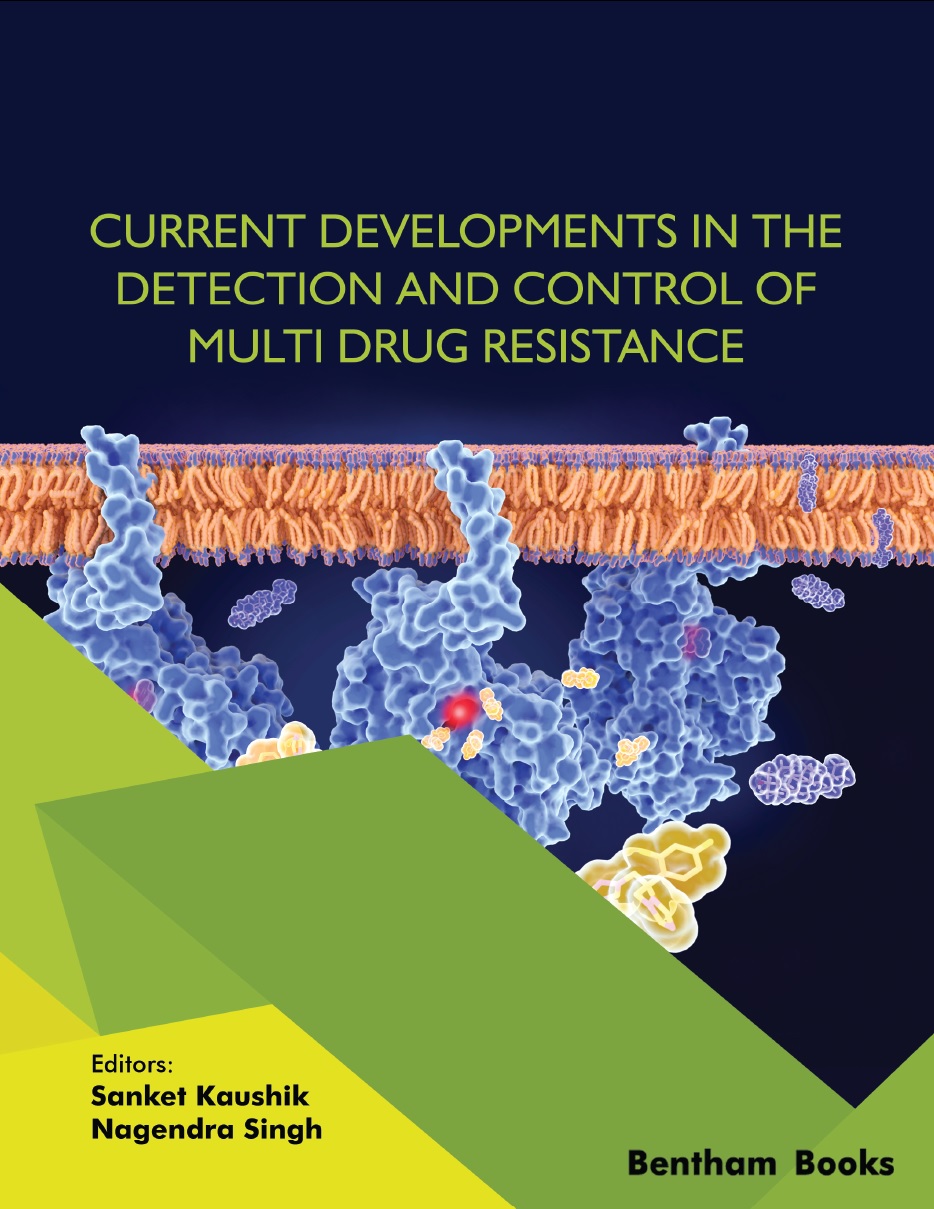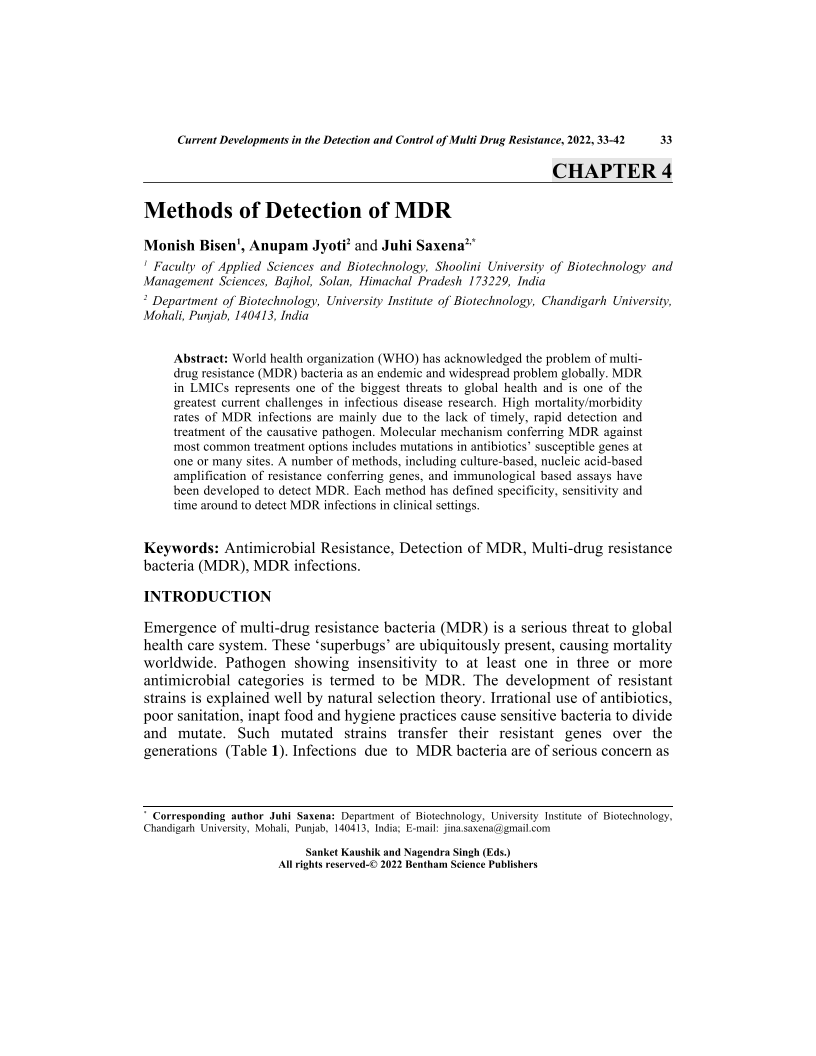Methods of Detection of MDR

- Authors: Monish Bisen1, Anupam Jyoti2, Juhi Saxena3
-
View Affiliations Hide Affiliations1 Faculty of Applied Sciences and Biotechnology, Shoolini University of Biotechnology andManagement Sciences, Bajhol, Solan, Himachal Pradesh 173229, India 2 Department of Biotechnology, University Institute of Biotechnology, Chandigarh University,Mohali, Punjab, 140413, India 3 Department of Biotechnology, University Institute of Biotechnology, Chandigarh University,Mohali, Punjab, 140413, India
- Source: Current Developments in the Detection and Control of Multi Drug Resistance , pp 33-42
- Publication Date: July 2022
- Language: English
Methods of Detection of MDR, Page 1 of 1
< Previous page | Next page > /docserver/preview/fulltext/9789815049879/chap4-1.gif
World health organization (WHO) has acknowledged the problem of multi drug resistance (MDR) bacteria as an endemic and widespread problem globally. MDR in LMICs represents one of the biggest threats to global health and is one of the greatest current challenges in infectious disease research. High mortality/morbidity rates of MDR infections are mainly due to the lack of timely, rapid detection and treatment of the causative pathogen. Molecular mechanism conferring MDR against most common treatment options includes mutations in antibiotics’ susceptible genes at one or many sites. A number of methods, including culture-based, nucleic acid-based amplification of resistance conferring genes, and immunological based assays have been developed to detect MDR. Each method has defined specificity, sensitivity and time around to detect MDR infections in clinical settings. nbsp;
-
From This Site
/content/books/9789815049879.chap4dcterms_subject,pub_keyword-contentType:Journal -contentType:Figure -contentType:Table -contentType:SupplementaryData105

